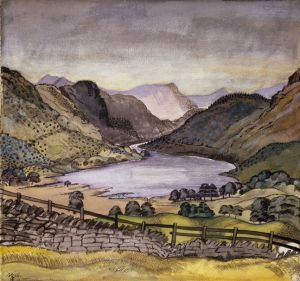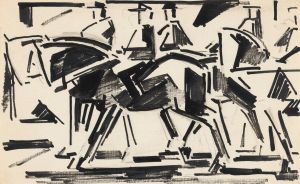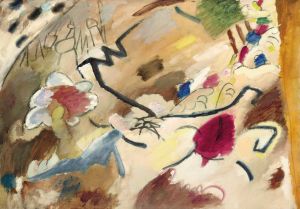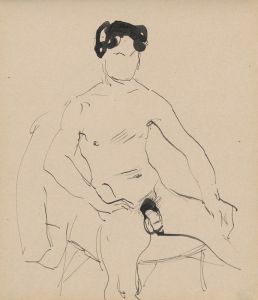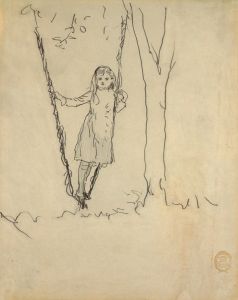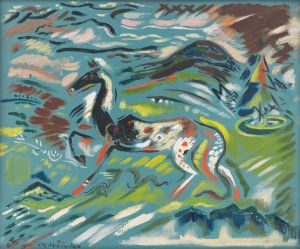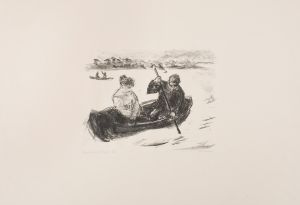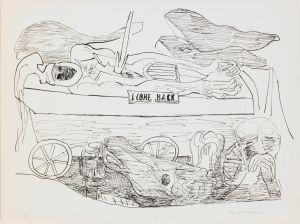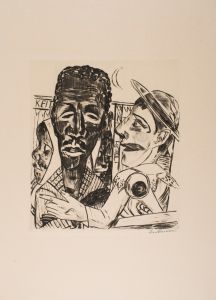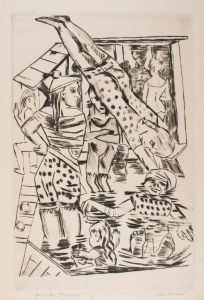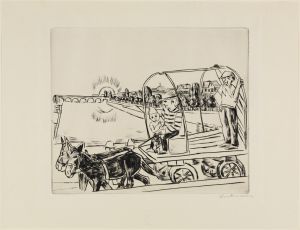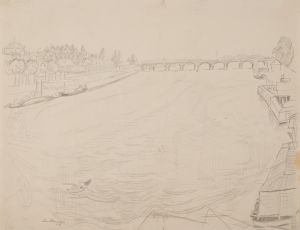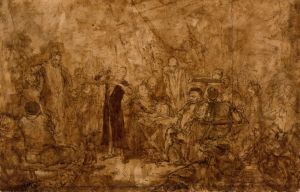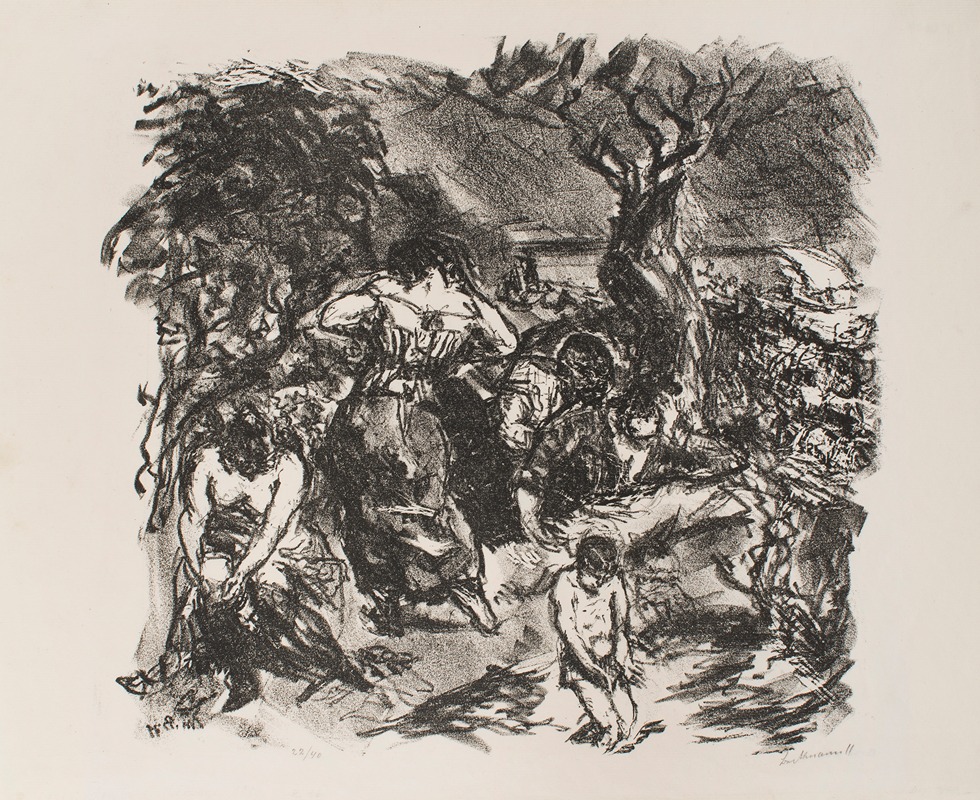
Swimming at Lake Tegel
A hand-painted replica of Max Beckmann’s masterpiece Swimming at Lake Tegel, meticulously crafted by professional artists to capture the true essence of the original. Each piece is created with museum-quality canvas and rare mineral pigments, carefully painted by experienced artists with delicate brushstrokes and rich, layered colors to perfectly recreate the texture of the original artwork. Unlike machine-printed reproductions, this hand-painted version brings the painting to life, infused with the artist’s emotions and skill in every stroke. Whether for personal collection or home decoration, it instantly elevates the artistic atmosphere of any space.
"Swimming at Lake Tegel" is a painting by the German artist Max Beckmann, created in 1923. Beckmann, born in 1884 in Leipzig, Germany, is renowned for his contributions to the Expressionist movement, although his work often transcends simple categorization. His art is characterized by bold colors, dynamic compositions, and a deep exploration of the human condition, often reflecting the tumultuous socio-political landscape of early 20th-century Europe.
The painting "Swimming at Lake Tegel" captures a scene at Lake Tegel, a popular recreational area in Berlin. This lake, known for its natural beauty, has long been a favored spot for swimming and leisure activities among Berlin's residents. Beckmann's choice of this location reflects his interest in everyday life and the human experiences within it.
In this work, Beckmann employs his distinctive style, marked by strong lines and a vivid color palette. The composition likely features figures engaged in swimming or relaxing by the water, capturing a moment of leisure and escape. This theme of leisure is significant, as it contrasts with the often intense and dramatic subjects of his other works, providing a glimpse into the more serene aspects of life during the Weimar Republic era.
The early 1920s, when Beckmann painted "Swimming at Lake Tegel," was a period of significant change and instability in Germany. The aftermath of World War I and the economic challenges of the Weimar Republic influenced many artists of the time. Beckmann himself was deeply affected by his experiences during the war, which often informed the emotional depth and complexity of his art. However, in "Swimming at Lake Tegel," there is a sense of tranquility and normalcy, perhaps offering a momentary respite from the broader societal upheavals.
Max Beckmann's work is often noted for its exploration of the human psyche and the complexities of modern life. While "Swimming at Lake Tegel" may not be as widely discussed as some of his other paintings, it nonetheless contributes to the understanding of his oeuvre by highlighting his ability to capture both the intensity and the quieter moments of life.
Beckmann's influence extends beyond his paintings; he was also a teacher and writer, contributing to the intellectual and artistic discourse of his time. His legacy is preserved in numerous collections worldwide, and his works continue to be studied for their innovative approach and profound impact on modern art.
In summary, "Swimming at Lake Tegel" by Max Beckmann is a testament to the artist's skill in portraying the nuances of human experience. Through this painting, Beckmann offers a snapshot of leisure and tranquility amidst the backdrop of a rapidly changing world, showcasing his unique ability to blend personal expression with broader social themes.





